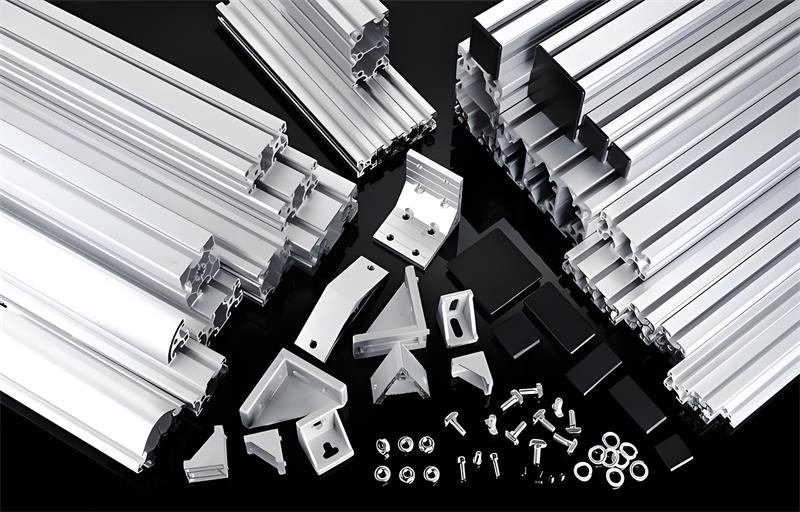The Impact of US-China Trade Friction on Aluminum Exports

1.Introduction
In the dynamic landscape of global trade, the aluminum industry has been significantly affected by the ongoing trade friction between the United States and China. While the recent tariff suspension agreement between the two countries has brought some relief to the aluminum export market, a series of challenges and opportunities still lie ahead. This article delves into the multifaceted impacts of these developments on the export of aluminum profiles and other aluminum products, and explores the strategies that Chinese aluminum enterprises are adopting to navigate this complex environment.
2. The Tariff Suspension Agreement: A Temporary Reprieve
The tariff suspension agreement between the US and China has provided a glimmer of hope for the aluminum export sector. After months of uncertainty, the agreement has led to an improvement in export expectations. Chinese aluminum exporters, especially those dealing in aluminum profiles, have seen a partial recovery in orders from the US market. This has helped to restore some confidence in the industry, as companies can now plan their production and sales strategies with a bit more certainty.
However, it is important to note that this reprieve is temporary. The agreement is subject to review, and the underlying trade tensions between the two countries remain unresolved. This uncertainty continues to cast a shadow over the long-term prospects of the aluminum export market.
3. Persistent Risks: EU Carbon Tariffs and US Tariff Threats
While the US-China tariff situation has temporarily eased, new challenges have emerged on the horizon. The European Union's carbon tariff policy, in particular, poses a significant threat to Chinese aluminum exports. The EU's Carbon Border Adjustment Mechanism (CBAM) aims to level the playing field for European industries by imposing carbon-related costs on imported goods, including aluminum. This could make Chinese aluminum products more expensive in the EU market, potentially reducing their competitiveness.
In addition, the United States has not ruled out the possibility of imposing additional tariffs on Chinese aluminum products in the future. The Biden administration has been reviewing trade policies, and there is a risk that further protectionist measures could be introduced to safeguard the domestic aluminum industry. This lingering threat keeps Chinese exporters on edge and complicates their long-term planning.
4. The Impact of Domestic Policy Adjustments
China's decision to cancel the export tax rebate policy for some aluminum products has had a profound impact on the industry. This policy change was part of the country's efforts to reduce energy-intensive exports and promote high-quality development. For low-value-added aluminum enterprises, the cancellation of export tax rebates has squeezed profit margins significantly. These companies, which rely heavily on price competitiveness in the international market, are finding it increasingly difficult to survive.
As a result, many low-value-added aluminum producers are being forced to transform. Some are investing in research and development to produce high-value-added aluminum products, such as specialized aluminum profiles for the aerospace or automotive industries. Others are exploring overseas factory establishment options to bypass trade barriers and take advantage of local resources and markets.
5. Strategic Shifts: High-Value-Added Products and Overseas Expansion
In response to the challenges posed by trade friction and domestic policy adjustments, Chinese aluminum enterprises are increasingly focusing on high-value-added products. By investing in technology and innovation, companies are developing aluminum profiles and other products with enhanced performance, quality, and functionality. These high-value-added products not only command higher prices in the international market but also help to reduce dependence on low-cost, low-margin exports.
At the same time, overseas factory establishment has become an attractive strategy for many aluminum enterprises. Countries like Mexico and Canada have emerged as key destinations for Chinese investment. Mexico, in particular, offers several advantages, including its proximity to the US market, preferential trade agreements, and relatively low labor costs. By establishing production facilities in Mexico, Chinese aluminum companies can avoid US tariffs and gain better access to the North American market.
6. Emerging Markets: Mexico and Canada
The trade friction between the US and China has accelerated the shift of Chinese aluminum exports towards emerging markets. Mexico and Canada have become increasingly important destinations for Chinese aluminum profiles and other products. In Mexico, the growing demand for aluminum in the construction, automotive, and manufacturing sectors has created new opportunities for Chinese exporters. Similarly, Canada, with its strong economic ties to the US and its own growing aluminum industry, offers a promising market for Chinese aluminum products.
To capitalize on these opportunities, Chinese aluminum enterprises are strengthening cooperation with local partners, investing in marketing and distribution channels, and adapting their products to meet local market demands. This strategic focus on emerging markets is helping to diversify China's aluminum export portfolio and reduce its dependence on traditional markets like the US.
7. Conclusion
The US-China trade friction has had a far-reaching impact on the aluminum export industry. While the tariff suspension agreement has provided some short-term relief, the industry continues to face significant challenges, including EU carbon tariffs, potential US tariff hikes, and domestic policy adjustments. In response, Chinese aluminum enterprises are taking proactive measures to transform and adapt. By focusing on high-value-added products, expanding overseas, and exploring emerging markets, these companies are positioning themselves to thrive in the face of adversity. As the global trade landscape continues to evolve, the ability to innovate and adapt will be crucial for the long-term success of the Chinese aluminum export industry.


 En
En



 Location:
Location:
















